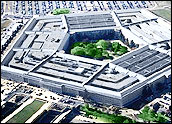
Imagine an automated medical treatment system that does not require onsite medical personnel on the front lines of battle, and is ready to receive, assess, and stabilize wounded soldiers during the critical hours following injury.
The Defense Advanced Research Projects Agency (DARPA) Defense Sciences Office (DSO) is moving toward that goal. DARPA announced today it has awarded an SRI International-led multi-organization team a US$12 million, two-year contract to develop such a revolutionary system.
“The goal of the project is to demonstrate the feasibility of performing automated and semi-automated surgery in a way that will be useful for providing advanced surgical care to soldiers on the battlefield,” John Bashkin, head of business development at SRI International, told TechNewsWorld.
Trauma Pods to the Rescue
SRI calls the program an important step toward enabling a future generation of battlefield-based unmanned medical treatment systems, or “trauma pods,” to stabilize injured soldiers within minutes after a battlefield trauma and administer life-saving medical and surgical care prior to evacuation and during transport.
The first phase of the program is an effort to develop robotic technology to perform a totally unmanned surgical procedure within a fixed facility. When fully developed, the Trauma Pod will not require human medical personnel on-site to conduct the surgery, and will be small enough to be carried by a medical ground or air vehicle.
Robotic Challenges
A human surgeon will conduct all the required surgical procedures from a remote location using a system of surgical manipulators. The system’s actions are then communicated wirelessly to the surgery site. Automated robotic systems will provide necessary support to the surgeon to conduct all phases of the operation.
“The biggest challenge is learning how to coordinate the teleoperated surgical system that’s controlled by the surgeon with the fully automated systems that go in to supporting his activities,” Bashkin said. “Down the road we will tackle other significant challenges, like how to automate anesthesia.”
Collaborative Effort
Bashkin estimated it would be about 10 years before the technology could possibly make it on to the battlefield. But the high-powered collaboration is pushing toward that goal.
The program will leverage substantial technology and expertise from a team of leading companies. SRI, an independent research and development organization, will serve as lead systems integrator on the collaborative project.
The team also includes General Dynamics Robotic Systems, Oak Ridge National Laboratory, the Universities of Texas, Washington, and Maryland, and Robotic Surgical Tech, Inc.
“This is an enormous collaboration between academic, commercial and government organizations that is leveraging the experience and know how from across those different environments,” Bashkin said. “It’s an exciting project from that standpoint alone.”





















































